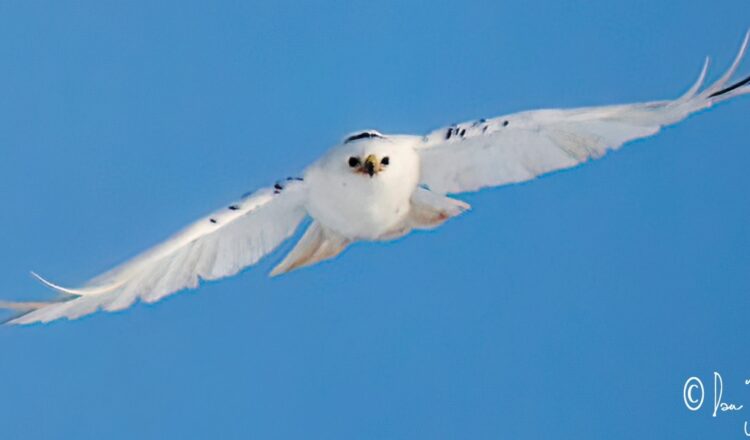“I feel so humbled to see and photograph this hawk”
By Dan Jordan, Jordan Photography and Consulting
We have somewhat of a celebrity right here in the Town of Allegany , NY. It’s not a movie star or a sports figure, but something even better. We have a red-tailed hawk, which is nearly all white. Whiter than snow, white. It has a form of leucism, which is a lack of pigmentation. It is not albino, I’ll explain later. It’s identity as a red-tailed hawk has been verified by experts from across the country. I’ve been very fortunate to have been photographing it for three years now.
The landowner of the property near where the nest is located, tipped me off to a “large white bird” on their property, then swore me to secrecy as to its location. She knew that I would photograph it and be able to tell her the species and relevant details as to why it is white. And, I did.

Today, I will do the same for you. I will share some of my best photos of this magnificent bird of prey as well as explain leucism and the difference between leucistic animals and albino animals. I’ll start with the explanations.
Leucism, as I stated above, is a disorder which results in a lack of pigmentation in skin, fur, or feathers of an animal. Wikipedia defines leucism as a wide variety of conditions that result in the partial loss of pigmentation in an animal—causing white, pale, or patchy coloration of the skin, hair, feathers, scales, or cuticles but NOT the eyes. They eyes are an important clue to identifying the pigment disorder.
Leucism ranges from patchy white or light regions, to all white depending on the severity of the condition. Piebald is a form of leucism which results in patchy loss of pigmentation. There have been a number of piebald deer in our area which have been well documented.
The science of leucism is quite involved. Pigmentation is complicated in plants, animals, and yes, humans. The science of pigments helps explain why the eyes are never affected in leucistic animals.
I’ve photogrpahed a piebald deer in Allegany, was invited to photograph a leucistic American robin in Wellsville (I have not made it yet), and have seen a leucistic beaver in Vandalia, NY within the last two years. I also regularly drive to central Pennsylvania to photograph a “white eagle”, a juvenile eagle with leucism. (Bonus photo of that bird in this article too!)
Despite these many sightings locally, leucism is fairly rare. Some scientist say that it, indeed, is not rare, it’s just that we don’t see a large percentage of wildlife with the disorder. They further state that there are plenty of leucistic specimens out there. While that may be true, there are a lot of animals with normal pigmentation out there that we never see too. Rare to me is defined by the percentage of leucistic animals of any sort we see compared to the total population of normally pigmented specimens of that species that we see. Based on this, in my definition of rare, leucistic animals are rare!
How many have you seen? Would you consider seeing one as a rare sight? I bet you would.
Animals with nearly total leucism (nearly all white) are even rarer. This is why I feel so humbled to see and photograph this hawk, not just once but almost daily now for three years running.
Albinism is a whole different condition. Albino animals (people included) have a heriditary condition which causes no production of melanin. Melanin is the pigment which gives color to skin, hair, and eyes. It is a permanent, lifelong condition. Surprisingly, albinism can also affect plants. Albino animals typically have a short life span in nature due to poor eyesight associated with the condition. They also are more prone to neurological problems than nornally pigmented animals, thought to be a result of the melanin scarcity in their brains.
Albinos have little or no color and appear to be all white or nearly white with pink eyes. This differs from leucistic animals which retain the normal coloration of their eyes. Albino eyes are not actually pink, they appear so because of the lack of pigment in their eyes allows the red blood cells in their retinas to be seen through their pale irises.
Let me dispell a couple of myths about albinism before getting to the photos.
- Albinos are sterile—I thought this was true until very recently. Apparently, albinism does not cause sterility. Researchers have been breeding albino specimens in captivity for some time in order to study the effects of melanin, or lack of.
- Partial albinism—Technically, there is no such thing as partial albinism. The plant or animal either has melanin or does not (albino).
- For example, people might think of a piebald deer as “partially albino”, but it has, in reality, a form of leucism. Piebald deer (or any other species) have normally colored eyes.
- Animals with partial loss of pigmentation are most often leucistic, although there are other rare pigment disorders other than albinism and leucism.
- There is even a pigment disorder called melanism, which is the opposite of albinism. Animals with this disorder have more melanin produced and are very dark. I have photographed a bald eagle with melanism, a strange looking bird. It had a black head and tail.
So now you know the facts about animals with pigment disorders, well at least some of the facts. So, let’s look at some photos.
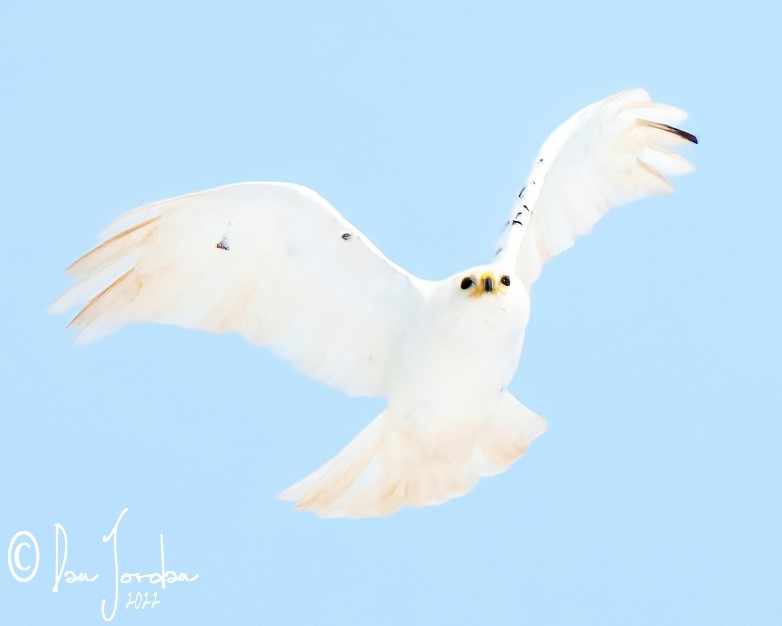
Except for the last photo of the eagle, these are all of the leucistic red-tailed hawk which lives in the Town of Allegany, NY. It retains some pigmentation, there are a few dark feathers, its beak and leg skin are normally pigmented, and there is a pinkish hue to its tail (would be red for a normally pigmented RTH). Even its talons lack pigment, as can be seen in some of the photos where they show as pink, rather than the normal black. Also, most importantly, its eyes are normally pigmented.
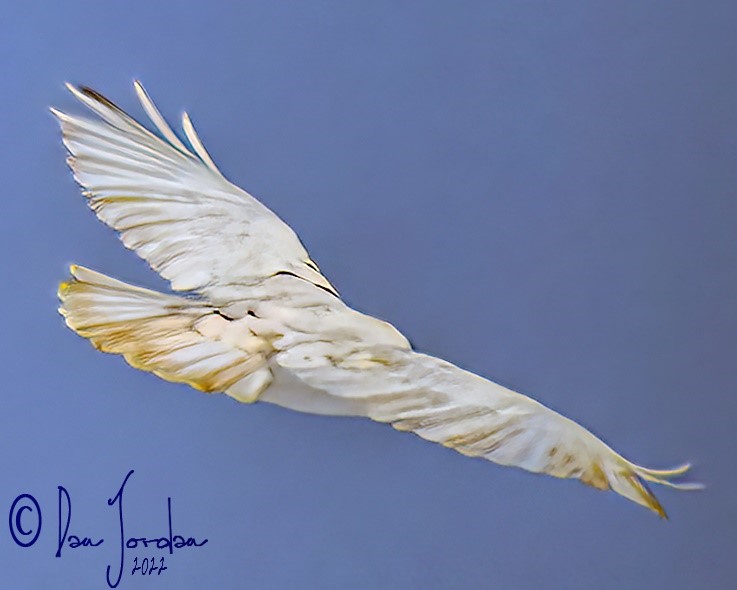
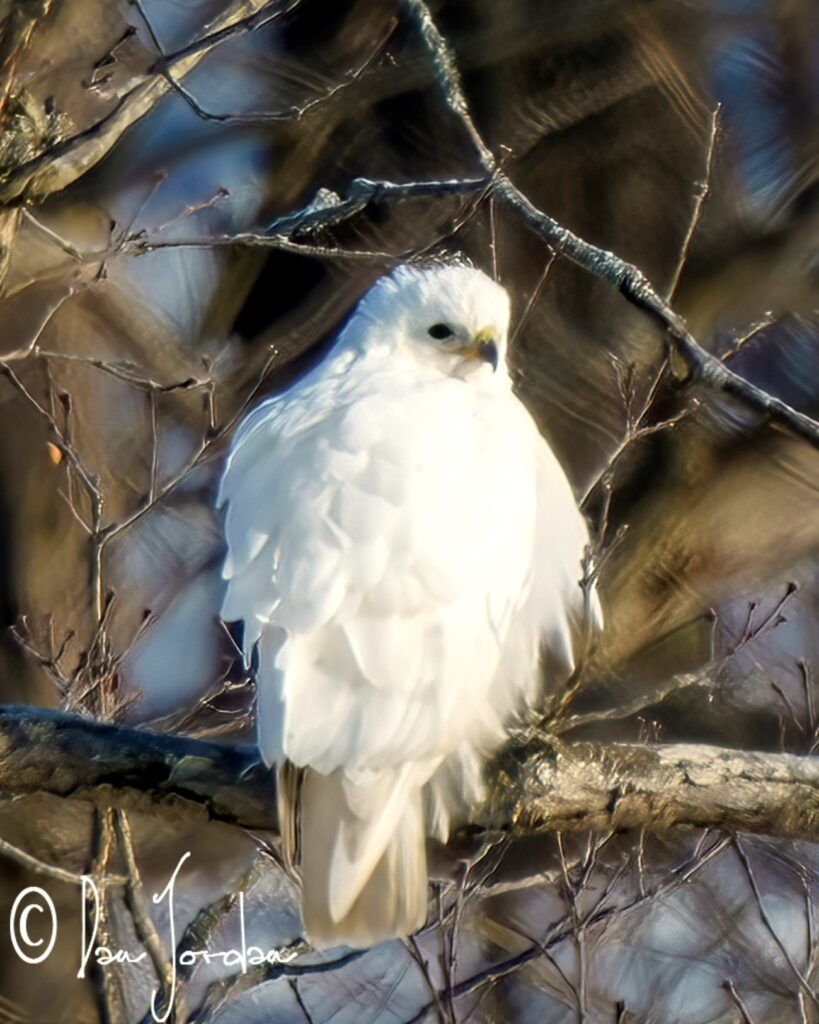
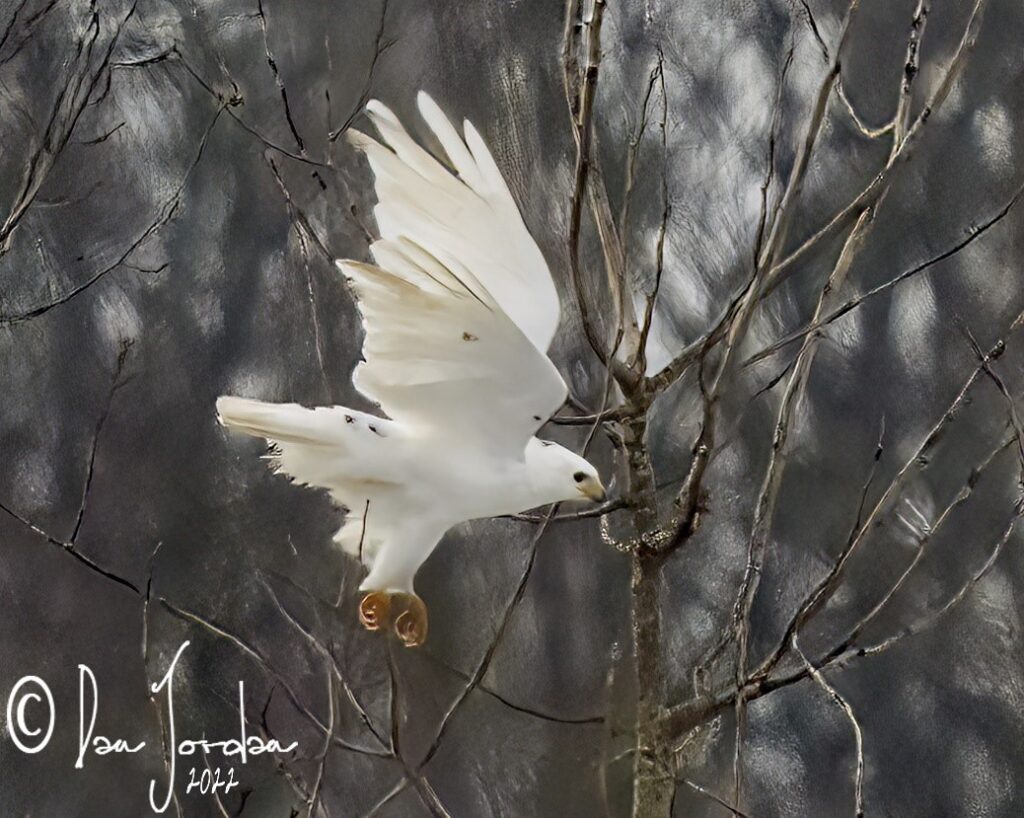
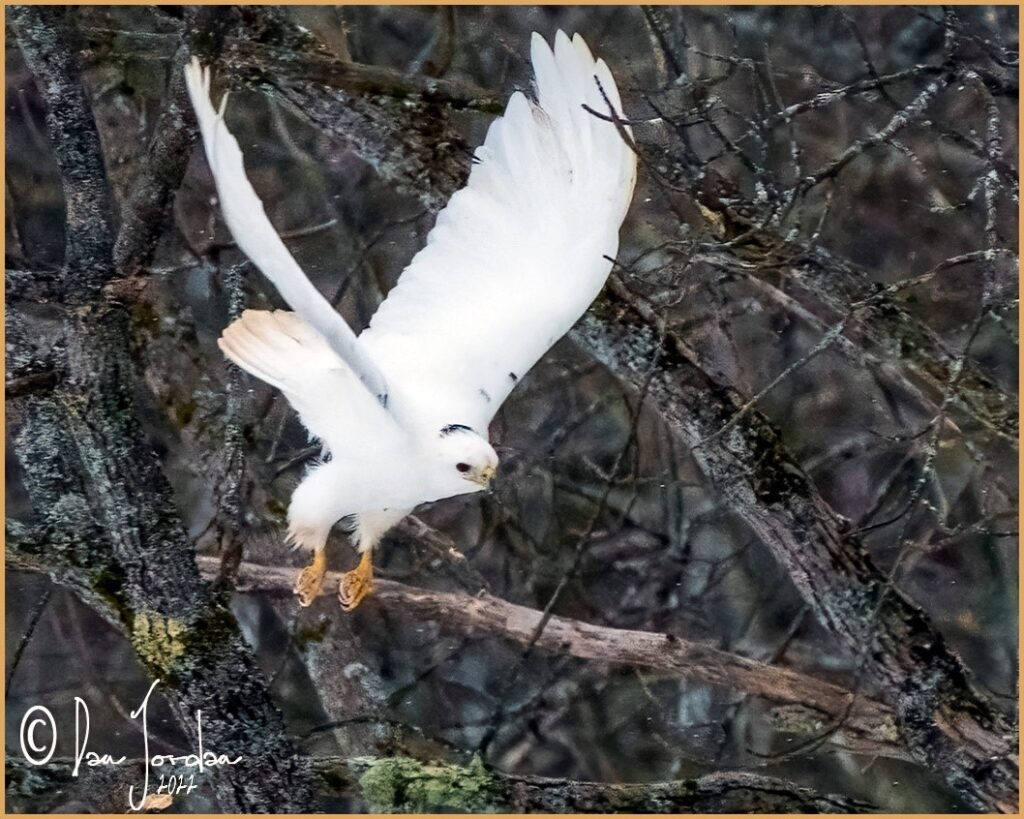
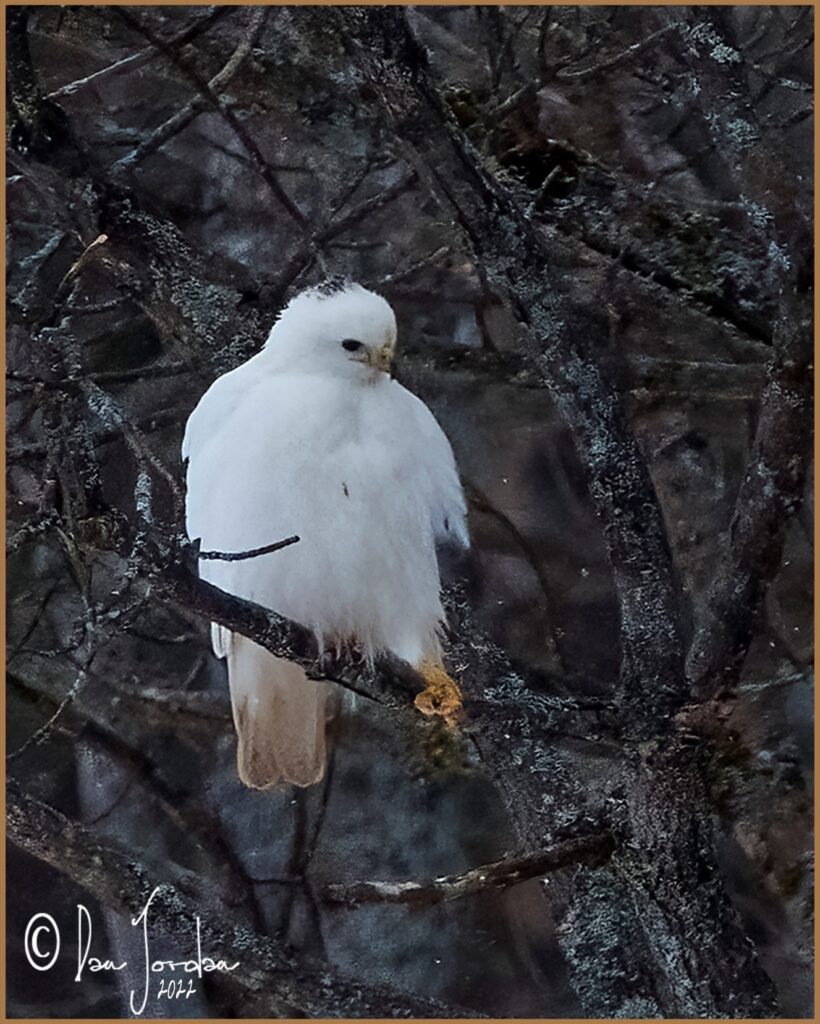
Before sharing the photo of the leucistic bald eagle, it hit me that one of the most common questions I get from people about the leucistic hawk is whether it has a nest. It does and on December 28, 2022, I had my first opportunity to photograph the hawk with its mate. Its mate, as can be seen in the following photo, is normally pigmented. This photo was taken from 200 yards through branches of the tree they were perched upon, so it’s not the best photo. It does, however, show the happy couple together, which to me was the first time I’d seen that other than circling above at high elevation.
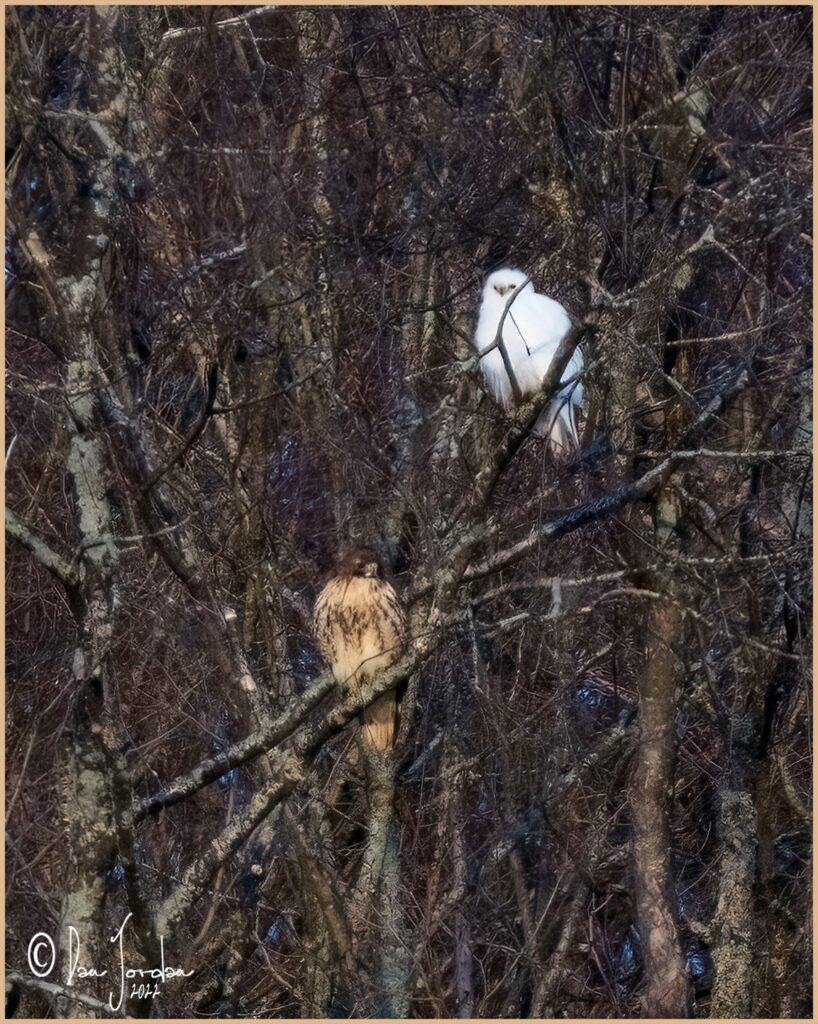
And finally, the last photo shows another leucistic bird of prey. This is a juvenile (first year according to sources near the bird’s location) bald eagle with leucism. The predominant pigmentation areas of the eagle are its head and tail, which as the eagle matures will turn white normally. Imagine how this will look if it reaches adulthood. Again, this photo was taken from 200 yards, as close as I’ve been able to get to this magnificent bird.
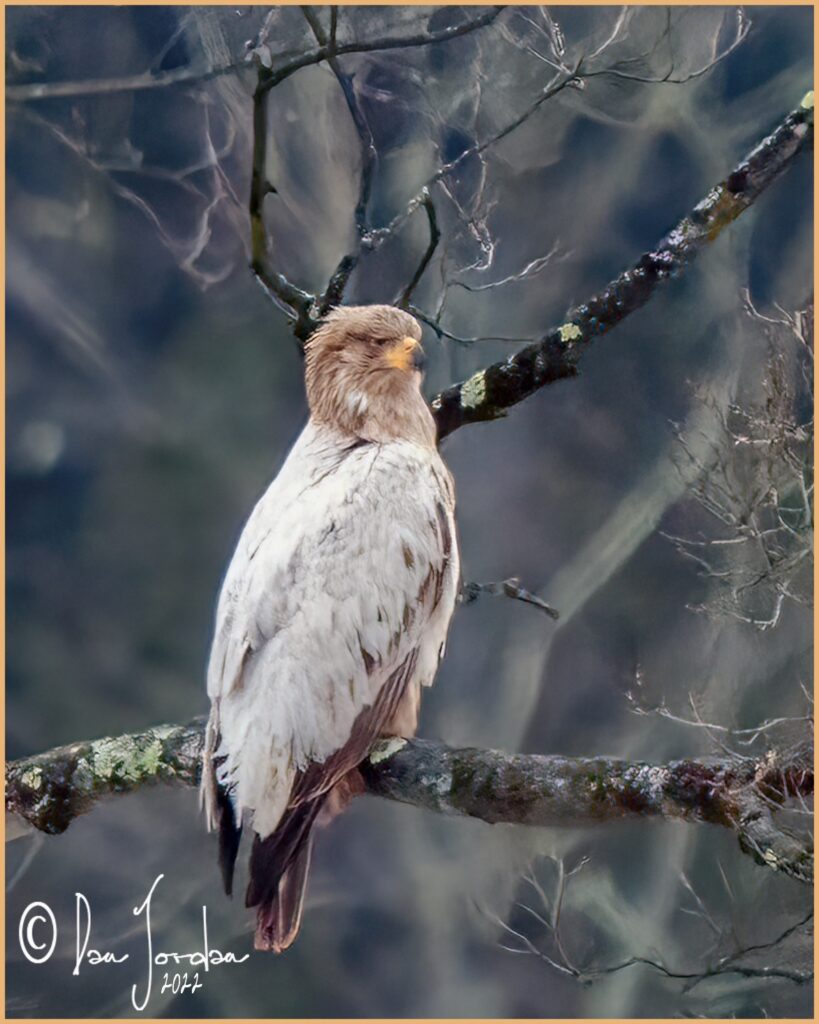
I hope you’ve enjoyed this edition of Dan Jordan’s Wild World and I hope I didn’t bore you with all the sciency content. Keep your eyes peeled for the different forms of leucism out there, be it piebald, or total leucism. Snap a photo and send it to me, if you have questions.
Keep your eyes open and cameras handy!


